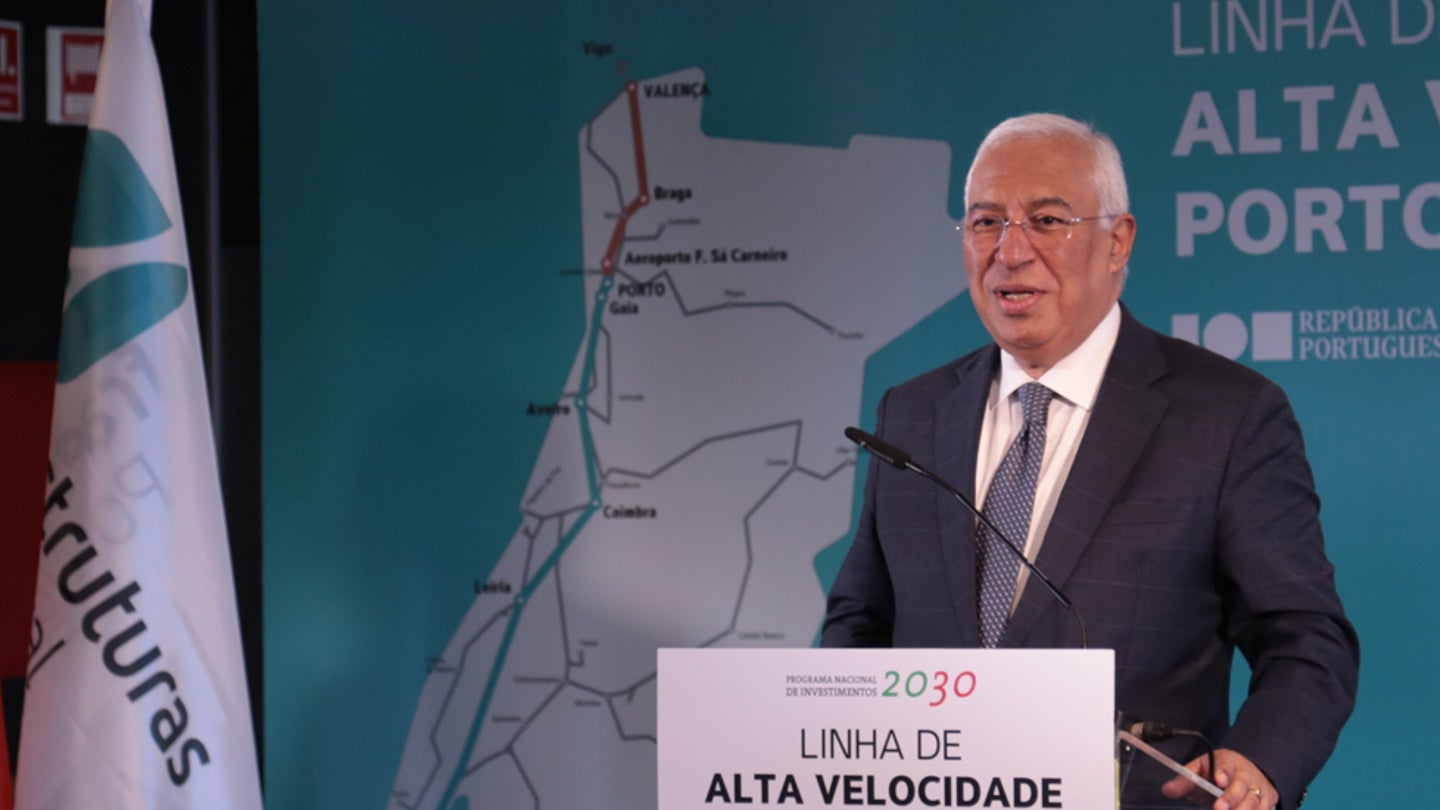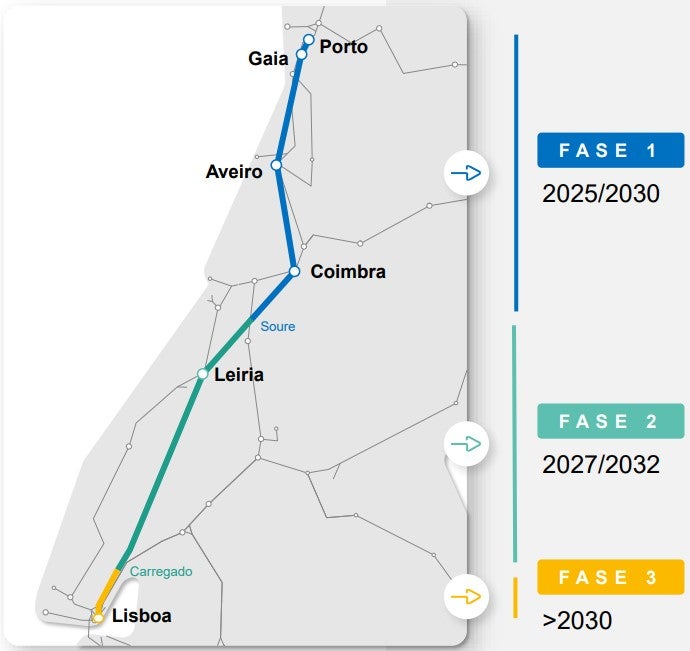
Portugal’s rail infrastructure management company Infraestruturas de Portugal (IP) has put out the tender for the first section of the Porto to Lisbon high-speed line.
The initial tender for the first phase of the project, covering Porto to Soure, is looking for a €2bn ($2.1bn) investment through a public-private partnership (PPP) and will include the 70km Porto to Oiã section of the line, which features 11.6km of tunnels, 9.5km of bridges and 2.8km of viaducts.
IP’s release of the tender marks one of the biggest steps towards beginning construction on the project, which is expected to begin work on the first phase in 2025, with the second phase between Soure and Carregado beginning in 2027 and the final section after 2030.
Portuguese Prime Minister António Costa said: “This project corresponds to a vision of our country, our development strategy and our insertion in the European continent. We have to have a country that is both competitive externally and that is more cohesive internally.”
The total 290km project will connect Portugal’s two largest cities with a faster service, reducing travel times from two hours and 49 minutes by more than half to one hour and 15 minutes.

While most train stations along the route will be adapted for the new line, IP said it would also build a new station in Vila Nova de Gaia, Santo Ovídio as part of the project.
How well do you really know your competitors?
Access the most comprehensive Company Profiles on the market, powered by GlobalData. Save hours of research. Gain competitive edge.

Thank you!
Your download email will arrive shortly
Not ready to buy yet? Download a free sample
We are confident about the unique quality of our Company Profiles. However, we want you to make the most beneficial decision for your business, so we offer a free sample that you can download by submitting the below form
By GlobalDataDuring IP’s event to launch the tender and reveal further details about the project, the state-owned company said it was expecting another 10 million passenger per year on top of the numbers for the existing North Line after the completion of phases one and two.
IP Vice President Carols Fernandes also defended the decision to build the track on the 1,668mm Iberian gauge, saying it was essential to ensure the line could connect with existing tracks and across the border to Spain’s high-speed line.
He said: “The Spanish government has already stated that it will not migrate this line, because it is used for a number of functions within Galicia. Therefore, if Portugal had decided to run our line on European gauge, when we reached the border, the trains wouldn’t have left.”
The release of the tender follows another notable investment in the country’s rail network with Alstom’s €800m contract as the leader of a consortium delivering 117 new locomotives across the Lisbon Metropolitan Area.






